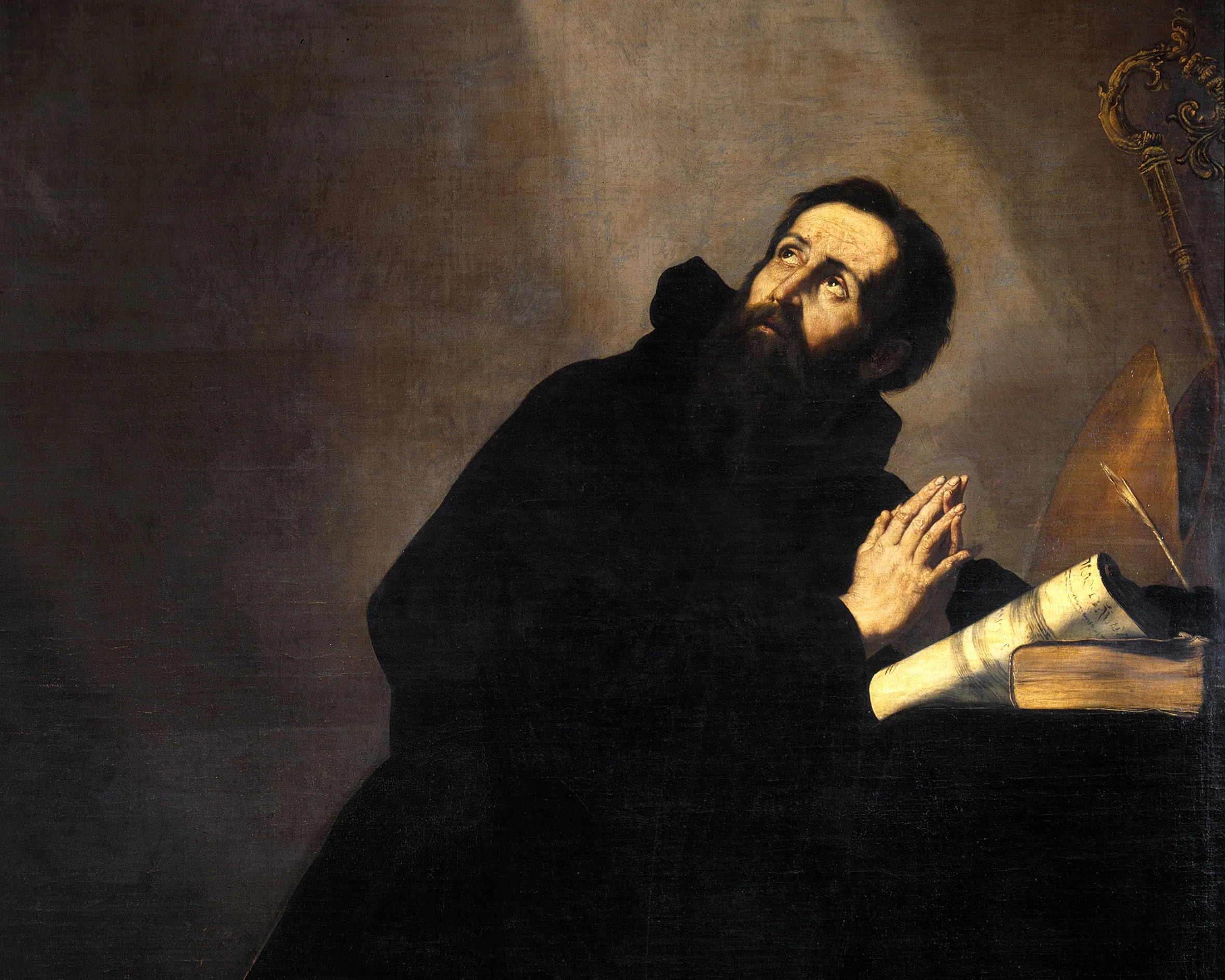Augustine of Hippo stands at a crossing between philosophy, scripture, and mysticism. He fought against the gnostic sects of his age, but his own writings pulse with movements close to the hermetic ascent and to the kabbalistic work of restoration. He did not design magical systems, but his confessions are themselves initiatory. They reveal a man broken by desire and re-formed by Grace, a seeker who found the eternal not outside but within, a thinker who touched the Divine by turning memory into sanctuary. Augustine’s path shows that spiritual truth does not rest in abstract thought alone, but in tears that purify and in words that rise as prayer. Thus to read him in depth is to see how close he stands to the mysteries he outwardly rejected. He speaks of the inner man as temple, of the ascent of mind as vision, of time as opening for God. These images go beyond the arid scholastic Augustine later canonised, reaching the restless heart who burned for Beauty.
I. The Hermetic Ascent
Augustine speaks of the soul’s climb as if it were a ladder of fire. He describes levels of memory, the chambers of thought, the vision of the intellect lifted to touch eternity. The words recall the hermetic teaching that the Divine is reached by illumination. When Augustine writes noli foras ire; in te redi. In interiore homine habitat veritas, he sets the map: Do not search outward, turn inward. Within the interior man truth dwells.
This could be read alongside the Poimandres, where the nous rises beyond the spheres to behold the One. Augustine uses Christian language, but the form of his vision echoes that ascent. His visio mentis, the sight of the intellect, is described as a moment in which the soul is seized beyond itself, not through syllogism but through direct Light. He passes through the world toward the unity that shines within. The hand of God lifts him, and the rising is already the seed of resurrection. The soul is drawn upward in stages, as if each layer of memory were an orbit of the heavens, until the eternal Sun breaks in. This is an interior liturgy where the soul climbs step by step until silence is filled with God.
II. The Wounded Soul and the Work of Restoration
Augustine never used the word Tikkun, but he lived its truth in his flesh. His life was a broken vessel, cracked by excess, misplaced love, vain pursuit. In his confession he recounts how desire was bent, will fragmented, time wasted, and the Word forgotten. Each of these fractures becomes a site of restoration. When Grace touches him, the vessel is repaired. The wound becomes the place of Light.
He mirrors the work of repair spoken of in mystical traditions that see the world as shards awaiting healing. Augustine teaches that salvation does not erase the past; it redeems it. The brokenness of the soul becomes the very site where God enters. For him, time is a depth of memory, an ever-present field where past lives on, present is encounter, future descends as Grace. This way of conceiving time is close to the kabbalistic intuition that all worlds are bound in the eternal now, and that healing is an act which reorders the fragments of creation. Augustine experiences this in the raw account of his heart torn and restored.
III. Time, Flesh, and the Eternal Word
One of Augustine’s boldest insights is his refusal to despise the flesh. He does not divide creation into pure spirit and corrupt matter. He weeps for his body, he struggles with his impulses, but he ponders that even the flesh be redeemed. He longs to see it converted into offering, baptised in tears, transfigured in resurrection. This is a vision beyond the dualism of his youth. It is close to the mystical hope that the world itself can be restored and raised. In his teaching on time, he writes that the present is the knife-edge where eternity enters. The past lives in memory, the future in hope, but both are gathered in the instant where God speaks.
This carries the mark of profound mysticism. It makes of each moment a vessel of Presence. For Augustine, to live in the present turned toward God is to allow time itself to be healed. This vision touches the secret fire of Hermetism, which seeks union with the One through interior ascent, and it resonates with the kabbalistic work of gathering the sparks. His confessions reveals a man seized by Beauty, wounded and restored, lifted from the ruins of desire into the silence of God.
Fiat Lux.
